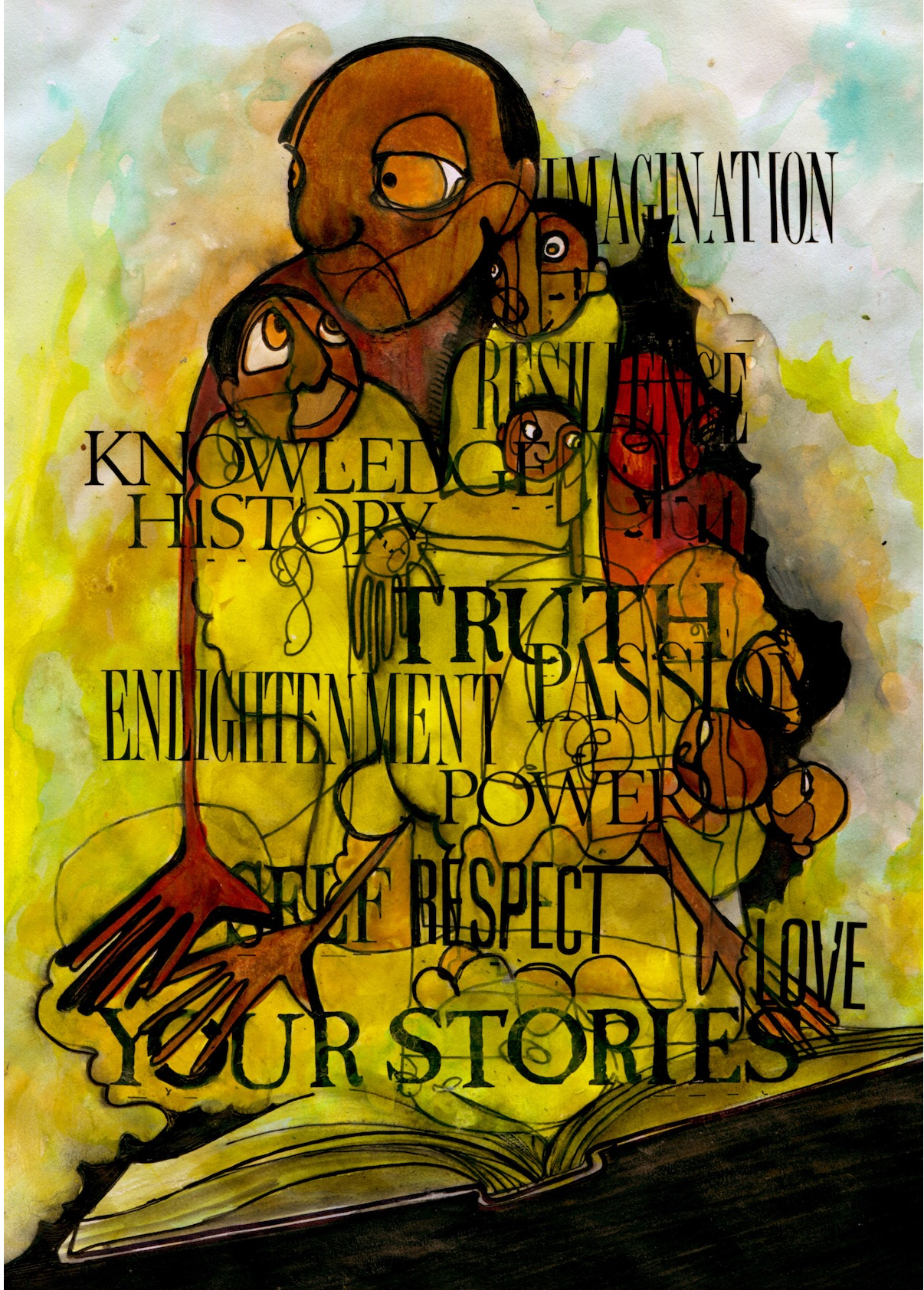Shadowshaper, Art, and Reclamation
Shadowshaper, Art, and Reclamation
As a poet and lover of music, fiction, and other creative media, I’ve always considered art to be magical.
There is something fantastic about how a poem or a song goes from the creator to another person and makes them connect to things. In Daniel José Older’s urban fantasy Shadowshaper, Sierra Santiago uses art to reclaim her magical heritage and strengthen her community.
Set in Brooklyn, New York, Sierra Santiago is an Afro-Latina teenager who just wants to enjoy her summer vacation with her friends. When she notices a neighborhood mural fading and the expression of the subject growing sad and angry, she is urged to finish her own mural by Manny, a friend of her grandfather Lazáro. Then, a walking corpse of a neighborhood man crashes a summer party and Sierra is thrust into the magical world of the shadowshapers. In order to protect her loved ones, Sierra must uncover the shadowshapers’ connection to her family and become a shadowshaper herself.
As an urban fantasy book, the real world manages to feel just as wonderful as the magical world. This is mainly due to the wonderful cast of characters that make up the people in Sierra’s life and the personal backgrounds that they come from. Two of my personal favorite characters were Tee and Izzy, lesbian girlfriends that were funny and loyal. Other favorites included Sierra’s Uncle Neville and Sierra’s intelligent, fashion opposite friend Bennie.
Besides their personalities, each character has a way of speaking that feels magical. One bit of dialogue that caught my attention features a back-and-forth between a group of domino-playing older gentlemen that were friends of Sierra’s grandpa Lazáro. In chapter six, Sierra pays them a visit and hears the following:
“Trouble at school, Sierra?” asked Mr. Jean-Louise. “Public school is a cesspool of poisonous bile.”
Manny threw his hands up, “¡Cállate, viejo!The child needs her education. Don’t ruin it for her just because you dropped out of kindergarten.”
Since the characters have strong ties to each other and their neighborhood, having the magical world of shadowshaping just underneath it makes them even more memorable. Shadowshaping involves giving spirits of departed loved ones and ancestors a physical form by fusing them with art. For Sierra and the other shadowshapers she encounters, the art is mainly visual, but shadowshaping can also be done through other creative means such as storytelling. The purpose of shadowshaping is to remember those who have come before and recently passed, preserving the past and present for the future generations.
In the real world, we already use art to remember and pass on the memories, traditions, and cultures of departed loved ones. Murals painted around cities become memorials and certain songs are sung, listened to, and written in tribute. However, Shadowshaper takes these things a step further by using the magic of shadowshaping to fight back against forces that try to eradicate an entire heritage. Protagonist Sierra Santiago must learn not only about shadowshaping, but also to stand up for the neighborhood and the culture that makes her who she is.
At the same time that the shadowshapers are being eradicated, Sierra’s multi-cultural neighborhood is experiencing gentrification. Places that Sierra and her friends used to go to are being transformed into establishments for white, middle class consumers. When the book opens, Sierra is in the middle of painting a mural on a building known as The Tower, a large-scale incomplete building that looms over the junklot where Manny and his friends play dominos. It is later revealed that Manny has a connection to the shadowshapers and that Sierra painting the mural was his way of trying to protect the neighborhood and the remaining shadowshapers.
Not only is Sierra fighting a battle within her own neighborhood, but she is also fighting an internal battle as well. Although she is confident in herself, there are times that she doesn’t feel she is enough of an Afro-Latina girl. Tía Rosa, her aunt, makes comments that contain anti-blackness and colorism (i.e. discrimination based on how light or dark one’s skin tone is). She says that Sierra’s friend Robbie is too dark and that Sierra’s hair is too nappy. In addition, Sierra also deals with sexual harassment while walking around her neighborhood, being shamed by her mom for her interest in shadowshaping, and sexism as a female shadowshaper.
Given all that Sierra experiences in her daily life, her heroic journey is deeply compelling. Sierra uses her artistic talent and shadowshaping to protect her neighborhood and reclaim a magical heritage she learns to appreciate through her family and friends. As a poet, I can’t help but admire Sierra Santiago and see part of myself in her. With paintbrush and chalk, Sierra Santiago shows that an artist can be a hero, a creative making something from shadows in order to express herself and preserve and protect what is important.

The Afro YA promotes black young adult authors and YA books with black characters, especially those that influence Pennington, an aspiring YA author who believes that black YA readers need diverse books, creators, and stories so that they don’t have to search for their experiences like she did.
Latonya Pennington is a poet and freelance pop culture critic. Their freelance work can also be found at PRIDE, Wear Your Voice magazine, and Black Sci-fi. As a poet, they have been published in Fiyah Lit magazine, Scribes of Nyota, and Argot magazine among others.

top photo by Patrick Tomasso on Unsplash

Recent Comments